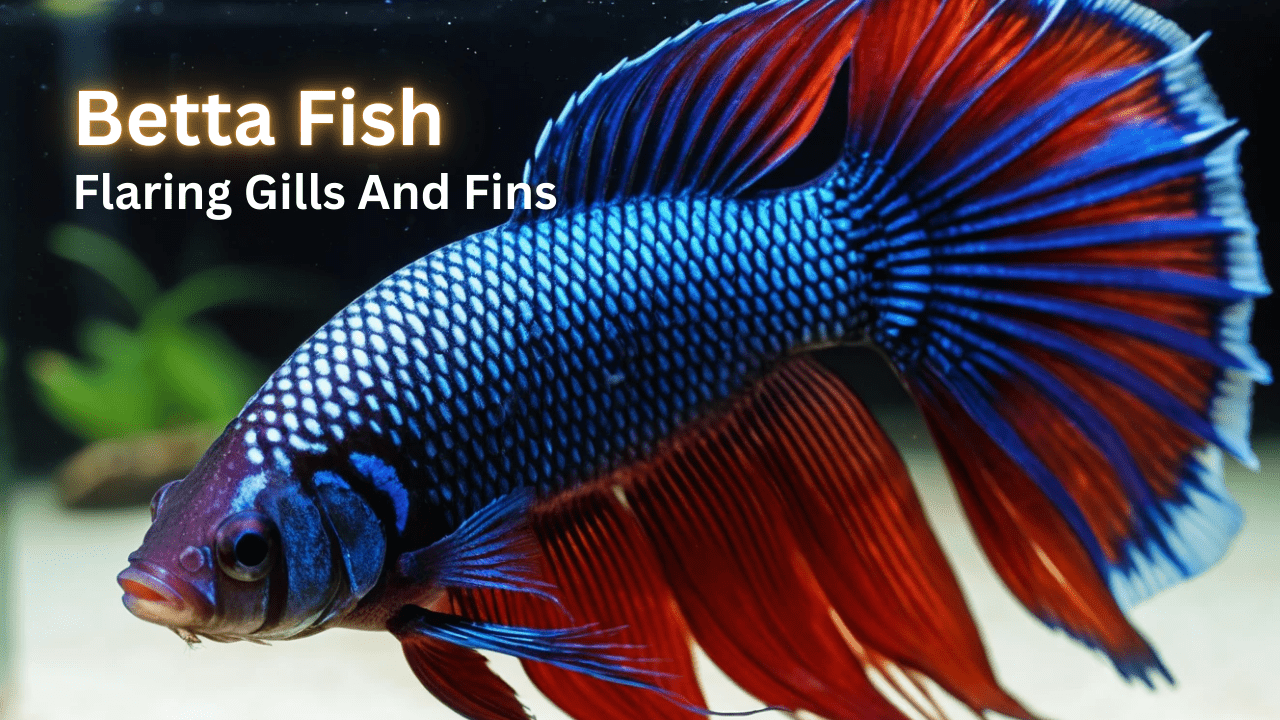Keeping betta fish has always fascinated aquarists, especially since these tropical, freshwater creatures display such active personalities in captivity. Watching them swim gracefully in a tank and respond to touch makes them a delight to play with.
However, they can quickly turn angry when threatened by incompatible mates, sudden environmental factors, or even their own reflection in mirrors. Of course, their natural reaction is to puff out their gills and spread their fins in a dramatic flare. Many popular discussions among enthusiasts will discuss why they exhibit this behavior and what triggers it.

Today’s article takes a closer look at their instincts and may provide insights around what they do when feeling defensive. Once you understand these signs, you’ll appreciate just how expressive these remarkable fish really are.
Fish flaring gills
Observing fish behavior, especially in betta, is fascinating as they often display flaring with their gills to look larger than normal. The two main reasons behind this are to mate or fight. A male will flare their gills when mating because it makes them appear stronger and more dominant. Besides that, bettas are highly aggressive, so they tend to spread their gill covers before fighting, which can frighten the opposite fish. In addition, sometimes bettas take in extra oxygen while flaring.
Generally, this normal behavior does not need treatment, but when they also extend their fins, you can check whether there are signs of fin rot. Once you find any abnormal symptoms, taking action to heal your fish immediately is important. By the way, some species like Siamese fighting fish and guppy fish are more susceptible to excessive flaring.
Why Do Betta Fish Flare Their Gills at Me?
If your betta fish starts to flare its gills at me, you might wonder why this common behavior happens. When first introduced to a new tank, bettas may act defensive because they are not yet familiar with their environment. In this case, you should help your bettas get accustomed gradually. During the cleaning process, it’s best to leave your betta in the tank and then proceed gently and slowly. Also, since most bettas see colors and react to action, they can feel vibrations around them. For instance, bettas have more cones in their eyes than humans, so they can detect not only red, green, and blue, but even ultraviolet shades.
Aside from that, they may flare at a mirror, but they actually do not know the reflection is themselves. Once you find the causes of flaring fins, it’s vital to take the necessary steps and start the treatment. Next, we will list ways to heal your flaring betta.
Causes of fish flaring gills and fins Treatment
| Mate | Do not need treatment |
| Fight | Do not need treatment |
| Oxygen deficiency | Improve oxygen level by adding air pumps or air stones, etc. |
| Disease | Once fish suffer from disease, you should find root causes first, and then take targeted treatment |
Is flaring good or bad for bettas
Is flaring good or bad for bettas? It all depends on the real-time situation. Keep reading to discover the truth and what it means for your betta fish.
Flaring is good for betta fish
Betta fish flaring can be beneficial to some extent. A brief 1–2 minutes daily provides exercise and entertainment. As long as there’s no aggression, it’s harmless.
Flaring is bad for betta fish
Betta fish flaring can signal stress from tank mates, reflections, or other bettas. Excessive flaring weakens immunity and appetite, so limit it to under 20 minutes weekly.
What to do when betta fish don’t flare
If your betta fish doesn’t flare, try introducing a female or another male carefully. Monitor for aggression. Raising water temperature or adding aquarium salt may also help.
How to tell if the betta fish is happy
Abnormal Betta Fish Behavior
When bettas feel stressed or unhappy, they may show these signs:
- Dull body color
- Stress stripes (horizontal lines)
- Loss of appetite
- Lethargy and inactivity
- Staying at the tank bottom
Normal Betta Fish Behavior
- Actively swims and explores
- Flares fins and becomes energetic when noticing you
- Occasionally hides in the aquarium
How to Determine if Your Betta is Happy
You can assess a betta’s happiness by observing its behavior.
- Happy Betta Signs:
- Active swimming and exploring
- Healthy appetite
- Engages with its surroundings and owner
- Unhappy Betta Signs:
- Loss of appetite
- Rubbing against rocks or crashing into the tank bottom
- Staying in one place for long periods
- Hiding or swimming away from interaction
To ensure happiness, check water parameters and watch for signs of illness. You can also bond with your betta by doodling or placing notes near the tank.
How to Keep Betta Fish Happy
- Provide Enough Space: Bettas love swimming, so ensure a spacious tank with room to explore, play, and hide.
- Maintain Great Water Quality: Change 20-25% of the water weekly, test water parameters, and keep ammonia/nitrites at 0, with nitrates below 20 ppm.
- Add Live Aquatic Plants: Plants help oxygenate the water and provide hiding spots. Good choices include Marimo moss, water sprite, and Vallisneria.
- Offer a Proper Diet: Feed protein-rich foods like live, frozen, or freeze-dried daphnia. Avoid overfeeding—offer meals twice daily, ensuring they finish within 2–3 minutes.
FAQs
Why is my betta fish flaring?
When a betta fish flares and twitches, it is usually a natural reaction. Known for their territorial nature, bettas may mistake their reflection in a mirror or on a shiny surface for another betta. This triggers a defensive response, leading to flaring and twitching.
Do bettas flare when they are happy?
Bettas may flare their gills when they are excited or happy. Flaring can be a sign of aggression, courtship, or confidence, indicating that the fish is healthy and energetic.
How long should betta flare?
A betta fish should flare for about 1–2 minutes per day to exercise its muscles and stay healthy. Excessive flaring, beyond 20 minutes per week, may cause stress and fatigue.
Can female betta flare?
Yes, female bettas can flare, though it is less common than in males. They may flare in response to territorial disputes, reflections, or interactions with other fish, displaying dominance or mild aggression.
Conclusion
Betta fish flaring is a natural behavior that serves various purposes, from territorial defense to excitement and courtship. While occasional flaring is beneficial for exercise and muscle activation, excessive or prolonged flaring can lead to stress and health issues.
Understanding the reasons behind flaring—whether in males or the rarer cases of females—helps in maintaining a balanced and stress-free environment for your betta. By monitoring their behavior and adjusting their surroundings accordingly, you can ensure your betta stays healthy, confident, and happy.
Want to know mates of Betta fish? Then Read
- Can Betta Fish and Cherry Shrimp Share a Tank?
- Can Snails Live with Bettas?
- Are Betta Fish Compatible with Goldfish?
- Can Betta Fish & Guppies Live Together?
- Mollies and Bettas in One Tank?
- Is It Safe? African Dwarf Frogs & Bettas in the Same Tank
Also read for extra betta care!
